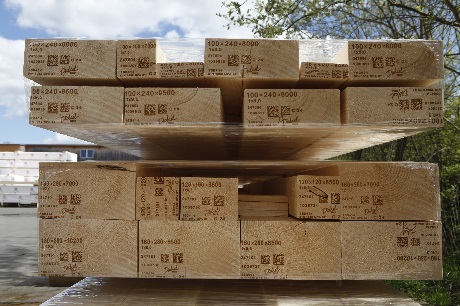A spruce is a tree of the genus Picea, a genus of about 35 species of coniferous evergreen trees in the Family Pinaceae, found in the northern temperate and boreal (taiga) regions of the earth. Spruces are large trees, from 20–60 metres (66–197 ft) tall when mature, and can be distinguished by their whorled branches and conical form. The needles, or leaves, of spruce trees are attached singly to the branches in a spiral fashion, each needle on a small peg-like structure called a pulvinus. The needles are shed when 4–10 years old, leaving the branches rough with the retained pulvinus (an easy means of distinguishing them from other similar genera, where the branches are fairly smooth).
In the mountains of western Sweden scientists have found a Norway Spruce tree, nicknamed Old Tjikko, which by reproducing through layering has reached an age of 9,550 years and is claimed to be the world's oldest known living tree.
Timber
Spruce is useful as a building wood, commonly referred to by several different names including North American timber, SPF (spruce, pine, fir) and whitewood. Spruce wood is used for many purposes, ranging from general construction work and crates to highly specialised uses in wooden aircraft, and as a tonewood in many musical instruments, including guitars, mandolins, cellos, violins, and the soundboard at the heart of a piano and the harp. The Wright brothers' first aircraft, the Flyer, was built of spruce.
Because this species has no insect or decay resistance qualities after logging, it is generally recommended for construction purposes as indoor use only (ex. indoor drywall framing). Spruce wood, when left outside cannot be expected to last more than 12–18 months depending on the type of climate it is exposed to.
Pulpwood
Spruce is one of the most important woods for paper uses, as it has long wood fibres which bind together to make strong paper. The fibres are thin walled and collapse to thin bands upon drying. Spruces are commonly used in mechanical pulping as they are easily bleached. Together with northern pines, northern spruces are commonly used to make NBSK. Spruces are cultivated over vast areas as pulpwood.
Food and medicine
Spruce (Picea mariana) essential oil in a clear glass vial.
The fresh shoots of many spruces and pines are a natural source of vitamin C. Captain Cook made alcoholic sugar-based spruce beer during his sea voyages in order to prevent scurvy in his crew. The leaves and branches, or the essential oils, can be used to brew spruce beer.
The tips from the needles can be used to make spruce tip syrup. In survival situations spruce needles can be directly ingested or boiled into a tea. This replaces large amounts of vitamin C. Also, water is stored in a spruce's needles, providing an alternative means of hydration. Spruce can be used as a preventive measure for scurvy in an environment where meat is the only prominent food source.
